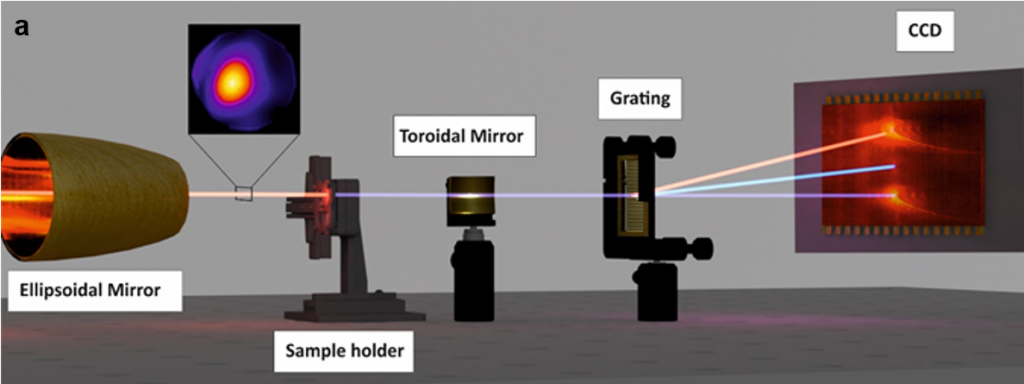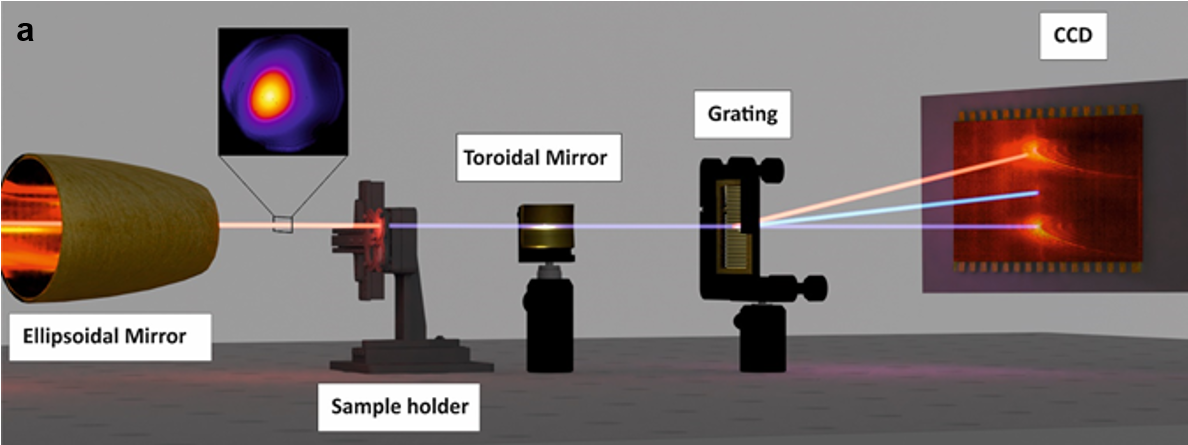First second harmonic generation of a XUV laser
Two photons with the same frequency can interact in a material to combine to a new photon of twice the frequency. This second-harmonic generation was first demonstrated in 1961 shortly after the invention of the laser with visible light and launched the field of nonlinear optics. An international collaboration gathering scientists from the IP-Paris, UC Berkeley, Uni Jena and more now succeeded in directly observing for the first time second harmonic generation of XUV photons.
The experiment was performed at Laboratoire d’Optique Appliquée, where the researchers developed a table-top XUV laser source with a performance capable of reaching the high intensity required to trigger nonlinear processes such as frequency doubling. The XUV pulse at 32nm was tightly focused onto the surface of a thin titanium foil. The transmitted radiation was then analyzed using a high-sensitivity XUV spectrometer, unveiling the generation of the second harmonic of the XUV laser pulse at a wavelength of 16nm.
Supplementary measurements suggested that thanks to the titanium electronic structure, resonant absorption of the primary XUV radiation strongly enhanced the nonlinear conversion. In order to better understand the processes at stake, complex numerical calculations were performed. They confirmed that the second harmonic generation occurs at the front surface of the metallic foil.
The surface and element specificity of the XUV second harmonic generation process makes it a suitable technique to investigate intrinsic properties of complex systems with a wide range of applications such as all-solid-state batteries, ferroelectric material, semiconductor heterojunctions and other low-dimensional quantum heterostructures, to name a few. The findings presented here also hint at the possibility to perform ultrafast nonlinear XUV spectroscopy using up-scalable sources.
This paper has just been published in Science Advances.




